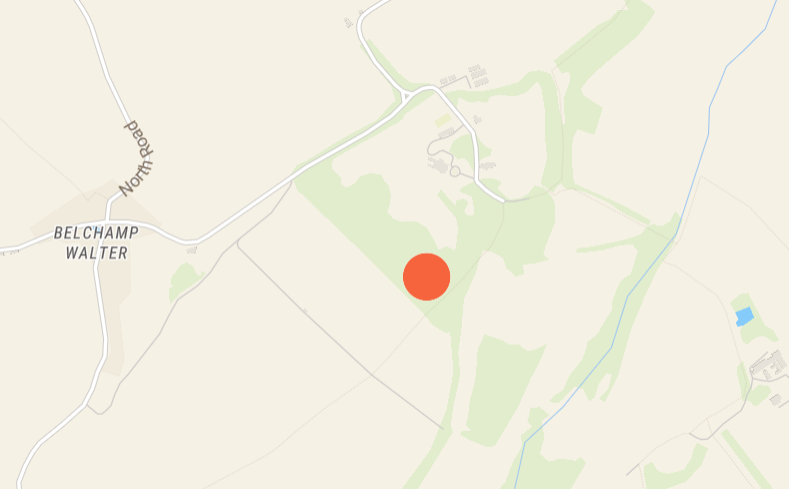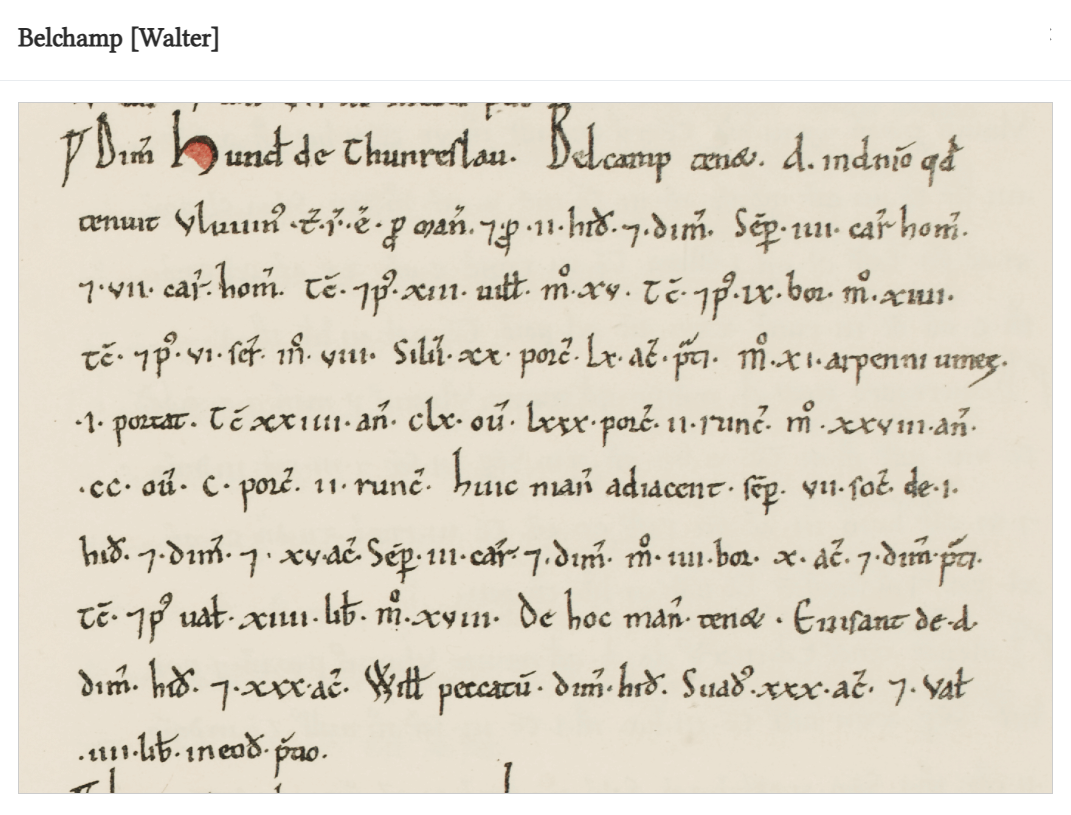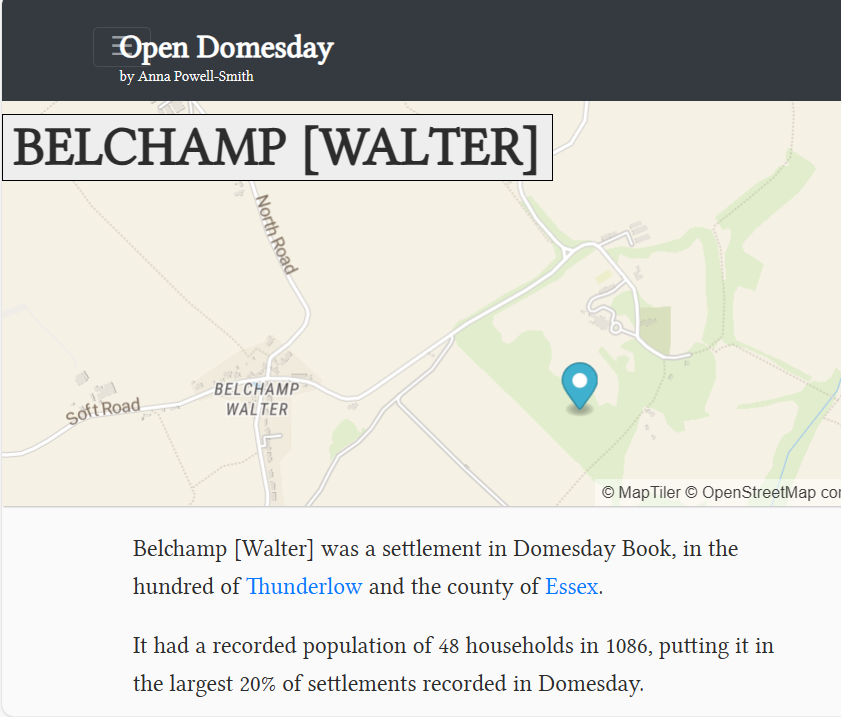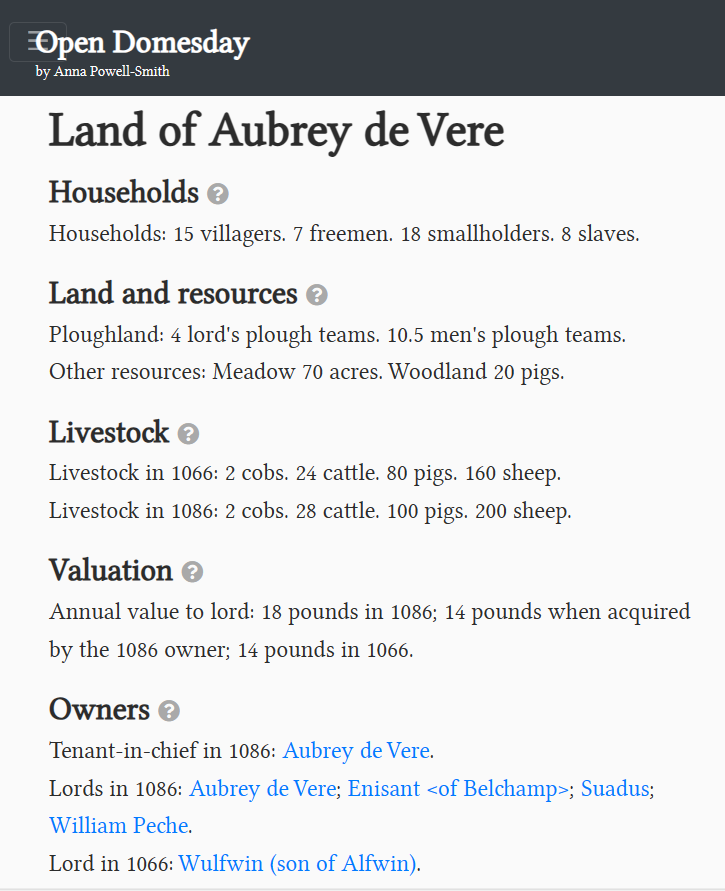Thunderlow - Land of Aubrey de Vere
opendomesday.org describes Thunderlow as "The Land of Aubrey de Vere". Belchamp Walter in the 11th Century appears to have a significant population but it is unlikely that the village as we know it today existed.
The Medieval Manor (house/hall) was probably not yet established but there was a chapel on the site indicated by the modern map.
The quotes below are from Open Domesday - by Anna Powell-Smith.

As at 1086 - the date of Domesday
There were:
- Households: 15 villagers. 7 freemen. 18 smallholders. 8 slaves.
- Ploughland: 4 lord's plough teams. 10.5 men's plough teams.
- Other resources: Meadow 70 acres. Woodland 20 pigs.
Livestock in 1066: 2 cobs. 24 cattle. 80 pigs. 160 sheep.
Livestock in 1086: 2 cobs. 28 cattle. 100 pigs. 200 sheep.
Definition of terms
Many of the terms taken from Domesday are derivations from the Latin and are historical useages and modern meanings may be a lot different to what they appear in a direct presentation.
The usage of the term "slaves" is more likely to be seen as "serfs" in more pc text.
The original text from Domesday:

As can be seen it is far from clear that Thunderlau can be written or known as Thunderlow. The Belcham, followed by text that means nothing to me, is taken as the location for Belchamp Walter as oppossed the the Belchamp reported to be "held" by the Canons of St. Pauls.

The interactive interface of Open Domesday is great to get a general feel of what the make-up of the region was in 1086 but how accurate is it?

Also, the Tenant-in-chief in 1086 is categorically stated as Aubrey de Vere. While this may have been the case it is a gross over-simplification around this may have been the case. The de Vere family are undoubtedly associated with the region but the reasons why are unclear and the subject of further research.
